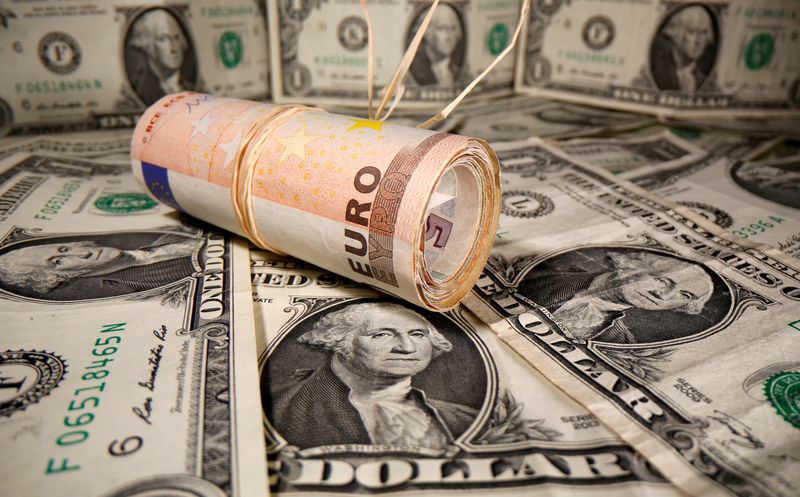By Yoruk Bahceli
(Reuters) - Battered U.S. and German government bond markets have just put in their best weekly performance since early March, suggesting a painful surge in yields due to high inflation may finally be abating as the focus turns to growth fears.
Gilts in Britain, where the Bank of England warned of a potential recession, saw their best performance since 2011.
Central banks have only just started tightening policy and inflation remains elevated, so there's reason for caution.
But here are four key shifts that suggest a turning point for the world's biggest debt markets.
1/ NO CONVICTION
Key benchmark 10-year bond yields have failed to hold above critical levels: 3% on U.S. Treasuries, 2% on British gilts and 1% on German Bunds.
"The fact that we didn't hold onto that was taken as a signal that ... there wasn't that much conviction behind high yields," said ING senior rates strategist Antoine Bouvet.
Investors are covering underweight positions in U.S. bonds sensitive to rates swings, usually the longest dated, at levels last seen in early 2021, BofA said in an investor survey on Friday. Respondents considered short positioning on rates -- bets that yields will rise further -- as the most overcrowded trade.
2/ PEAK INFLATION?
Market inflation expectations have fallen particularly sharply since the U.S. Federal Reserve jacked up rates on May 4.
Inflation breakevens, which measure the difference between nominal and inflation-adjusted yields, fell further after U.S data this week suggested inflation may be peaking.
The 10-year U.S. breakeven rate is at 2.7%, down from over 3% in April. It's dropped 20 bps this week alone, the sharpest weekly fall since April 2020.
The euro zone's the five-year, five-year breakeven forward inflation swap, tracked by the European Central Bank, fell to roughly two-months lows at around 2.16%.
Those falls have been driven by soaring inflation-adjusted , "real" yields. U.S. 10-year real yields have jumped 25 bps over the last two weeks, Germany equivalents are up 43 bps.
U.S. inflation-linked bonds (TIPS), a key hedge against future inflation, have seen outflows for the last three weeks, according to BofA citing EPFR data.
If markets are right, "central banks' inflation problems are less dire than the market considered them to be weeks or months ago," said Arne Petimezas, senior analyst at AFS Group.
Graphic: U.S., euro inflation breakevens fall-https://fingfx.thomsonreuters.com/gfx/mkt/gkplgkrqbvb/breakevens.png
3/ LOWER TERMINAL RATE
With inflation expectations falling, markets have reduced bets on the "terminal rate" -- where this hiking cycle ends. That's a sign investors believe less hikes may be necessary to contain inflation.
In the United States, money markets imply rates will rise to around 3% in mid-2023, compared to around 3.5% in early May. In the euro zone, where economists have warned rate hike pricing has been excessive, the ECB's policy rate is seen at roughly 1.2% in 2024, down from around 1.5% last Friday.
"The big move in bonds has been accompanied by a rerating of the rate outlook for the Fed, (Bank of England) and ECB," said Divyang Shah, strategist at Refinitiv's IFR Markets.
That is "very different to the prior corrections for bonds that did not last as expectations were still rising."
Graphic: ECB rate hike bets- https://fingfx.thomsonreuters.com/gfx/mkt/mypmnydqavr/ECB%20pricing.PNG
4/ SAFE HAVEN
Finally, this week's stellar bond performance came with a 4% slide in world stocks, putting top-rated government bonds back in the safe-haven seat.
That inverse correlation had recently been absent as equity and bond prices dropped together in the face of surging inflation.
In the United States, it's the first week since late March where 10-year bonds and the S&P 500 are set to end in opposite directions.
"The bit that's been missing is that risk-off means bonds rally," said Nick Hays, head of sterling rates and credit at AXA Investment Managers. "That doesn't always work but we can't go on for too long where bonds don't behave as a safe-haven."
Graphic: Treasuries vs S&P500-https://fingfx.thomsonreuters.com/gfx/mkt/gdpzyazjavw/sp%20vs%20usts.png
(This story corrects para 27 to say 'late' not 'early' March).
